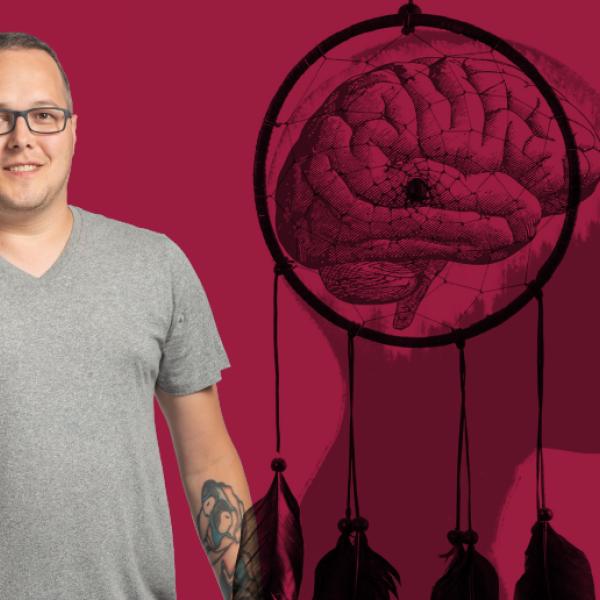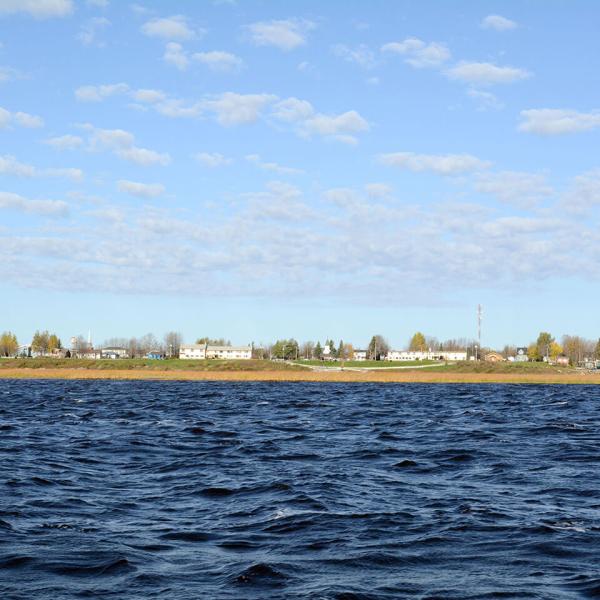Over a decade ago, my father sent me a photograph of the Pelican Lake Blackhawks, a residential school hockey team. He drew my attention to Angus, his younger brother, who was pictured along with brothers and cousins, and said, “Doesn’t he look like Sam?” Indeed. When I put the photo beside that of my youngest son, the resemblance is uncanny.
The Pelican Lake Indian Residential School hockey team, the Blackhawks, played their first game in January of 1948. The team was made up of boys from Treaties 3 and 9, several of whom were from Lac Seul First Nation in northwestern Ontario.
Mike Auksi is also connected to Lac Seul First Nation and that Pelican Lake hockey team. Auksi is Anishinaabe and Estonian and a fifth-year PhD student in the Department of Kinesiology and Physical Education at McGill University. He was raised in Toronto, and in 2002, he took the 24-hour train ride from Toronto to Sioux Lookout, near the Manitoba border in Northwestern Ontario, for the Northern Bands Hockey Tournament, where he first played for the Lac Seul Eagles and Stars hockey teams. He describes it as the perfect homecoming. His research into hockey is also a kind of homecoming.
Auksi’s PhD thesis, an autoethnographic oral history study, explores the role of hockey among the Anishinaabeg of Lac Seul First Nation. In collecting the stories of those who played, and still play, hockey in northern Ontario, Auksi has identified three eras, or “periods,” with specific themes.
Three “periods” of Indigenous hockey
Like all eras, there is more overlap between them than there are fixed boundaries, but it can be helpful to use these three periods as containers in which to think about the history and evolution of Indigenous players who began in residential schools, then played for their First Nations communities and finally on national and international ice.
The residential school era, the first of these three periods, is the origin story of Canadian hockey played by Indigenous people. The freedom of the game was constrained by its assimilationist setting, the residential schools where boys like Auksi’s father and my uncles played for teams such as Cecilia Jeffrey (Kenora, Ont.), Birtle (Birtle, Man.) and Pelican Lake (Sioux Lookout, Ont.).
As the Residential School System transitioned to the day school model, players began to enter less isolated hockey systems, culminating with the emergence of First Nations community-based hockey tournaments in the early 1970s, although the last residential school in Canada would not close until 1996. This was the second period, the era in which my father played.
The modern era, the third period, began at the turn of the millennium, a time when athletes like Mike Auksi skated in two worlds: community-based and mainstream (that is, as an elite amateur player) hockey. Auksi’s hockey career took him to Europe where he played semi-professionally and internationally for Team Estonia.
For Auksi, the single story of Canadian hockey erases First Nations hockey nationalisms and ignores the various linguistic, cultural and racial intersections of the game. He references Hegemony Contests: Challenging the Notion of a Singular Canadian Hockey Nationalism, in which the author, Kristi A. Allain, writes about the importance of telling the stories of First Nations hockey players, the distinct playing styles and the various meanings that First Nations players derived from the game. Canada’s single story may include the stories of First Nations players, but it subordinates all other hockey stories into supporting roles where the meaning of the game supports the national story rather than the Indigenous community where it emerged.
There may be stories of non-white or French players in popular hockey lore, but the stories themselves remain centered around the Stanley Cup rather than people or their communities. The Mi’kmaq have a history of being master carvers and by the early 20th century the creations of the legendary Mi’kmaq stick makers were used and enjoyed by many, including the sons of Lord Preston of Stanley (donor and namesake of the NHL’s Stanley Cup) long before hockey became central to expressions of Canadian nationalism.
Shifting the narrative of hockey in Canada
So, the question Auksi poses in his research is important: What stories emerge if we shift the centre of the Canadian hockey narrative, not to create another single overarching narrative but to create a constellation of centres that come together to form another way to tell the story of hockey in Canada?
For Auksi, the centre his research revolves around is in Lac Seul, a reserve just outside Sioux Lookout, Ont., about 400 kilometres northwest of Thunder Bay. As with many Indigenous communities across Canada, their story of hockey begins at residential school where they played on teams like the Pelican Lake Blackhawks.
Residential schools were places where Indigenous children were taken from their communities to be housed and educated collectively, to change them into Canadians. Siblings were often separated and children from the same community were sent to different schools, all in attempts to break whatever familial or community bonds they had. For the boys who were encouraged to play by school headmasters who had their own reasons, hockey was a diversion, an opportunity to play and travel. Later, community-based hockey and professional hockey would also offer opportunities for travel and relationship-building skills that transferred into other parts of their lives.
The path to hockey is not without barriers. Lac Seul community member and education director, Sylvia Davis, reflecting on the experiences of her students, notes that in addition to equipment costs, simply getting their child to practices can be challenging for working single parents, and a geographically distant part of this community doesn’t have reliable access to the arena.
Auksi’s vision of a more collective hockey narrative rooted in First Nations worldviews and values works alongside communities like Lac Seul to overcome some of these barriers. Funding for the emergent lab space (called Onkwanaktí:io, a Mohawk word meaning “Our nice inclusive space”) in which Auksi works daily in Montréal came from the CFI. Located within McGill University’s Department of Kinesiology and Physical Education, the lab, which is led by Auksi’s PhD supervisor, Jordan Koch, focuses on socially conscious research and often draws on Indigenous studies and the history and sociology of sport. Other disciplines within the department also provide a space that allows layered relationships to inform the development of knowledge, a constellation of many centres rather than a single story.
Other research in the lab is co-developing ways to collect biometric training-related data for Indigenous athletes living remotely, which can then be used to overcome some of the barriers faced by the geographic isolation of training in places outside of major urban centres.
Documenting the stories of Lac Seul hockey
When Indigenous people develop knowledge themselves, it allows them to approach that knowledge on their own terms. Centering our own knowledge development means that we ask questions that are rooted in our relationships to our communities and the land and waters upon which they exist. That comes from listening to the stories from each community, and for Auksi, that includes spending time on the land and ice of Northwestern Ontario where his research has taken him to Lac Seul, to collect stories from hockey players across the eras that he has defined to tell a story of Anishinaabe hockey.
Davis says that anytime we, as Indigenous people, are able to see and read things about ourselves, to see ourselves connected to broader society, that helps us. She says that the point isn’t for young people to leave the community, but for them to develop an understanding of their place in the broader world and then bring that knowledge home in ways that benefit their local community. There is real value in documenting and collecting the stories of Lac Seul hockey — it is a way to centre the story in the heart of Anishinaabe Aski Nations and to keep it centered there: one of many centres around which the story of hockey can revolve, expanding outwards into layered relationships with other hockey stories and creating a more complex and varied history.
Another Lac Seul community member, Roy Carpenter, who also played for the Pelican Lake Blackhawks in the mid-1950s, told me that when the boys played hockey they had to learn to work together. Kids from different reserves, sometimes different Nations, had to put aside differences and play as a team. He went on to say that across Canada, Indigenous people need to do that — put aside differences and work together as a team — and that as a team, we would be unstoppable. Maybe as unstoppable as the Lac Seul hockey team has a reputation for being.
| *Patty Krawec is an Anishinaabe and Ukrainian writer belonging to Lac Seul First Nation. |





